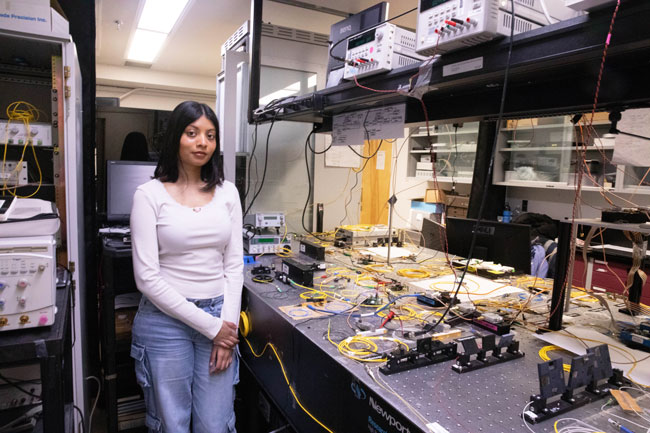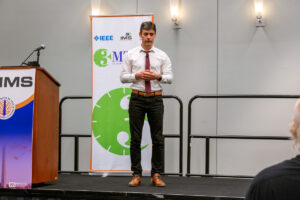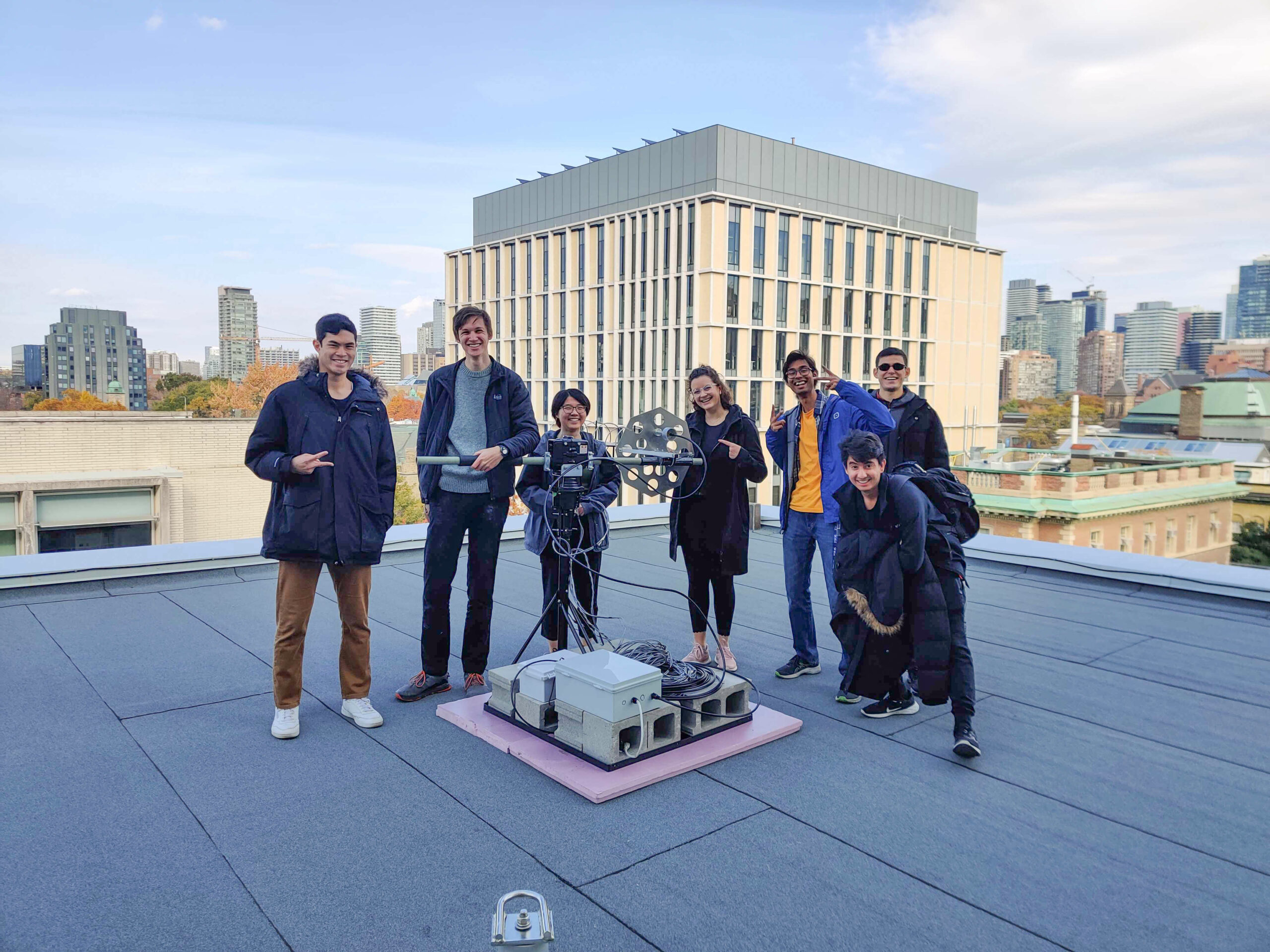
JANUARY 17, 2024 • By Safa Jinje
On November 11, 2023, U of T Engineering students gathered in the basement of the Sandford Fleming Building — known to many as The Pit — to witness the deployment of HERON Mk. II into space.
The 3U CubeSat satellite, built and operated by the University of Toronto Aerospace Team (UTAT), Space Systems division, was launched into orbit on a Falcon 9 rocket as part of SpaceX’s Transporter-9 rideshare mission that lifted off from the Vandenberg Space Force Base in Lompoc, Calif.
This feat was entirely student funded with support from U of T Engineering through student levies and UTAT-led fundraising efforts.
“The experience of the launch was very surreal,” says Benjamin Nero (MechE 2T2 + PEY, UTIAS MASc candidate), HERON’s current mission manger.
“We worked on this project for so long with such a narrow focus that actually seeing it deployed was very rewarding.”
“There are any number of things that could go wrong that might prevent a satellite from deploying,” adds Zachary Teper (ECE MASc candidate), who is part of the technical development team working on HERON’s ground station.
“So, watching each of the call outs coming out of the SpaceX mission control, seeing the rocket go up and meet every one of its mission objectives, and then finally, seeing our satellite get ejected out of the dispenser in the correct trajectory, was a big relief because we knew that it was finally in space and on the right path.”
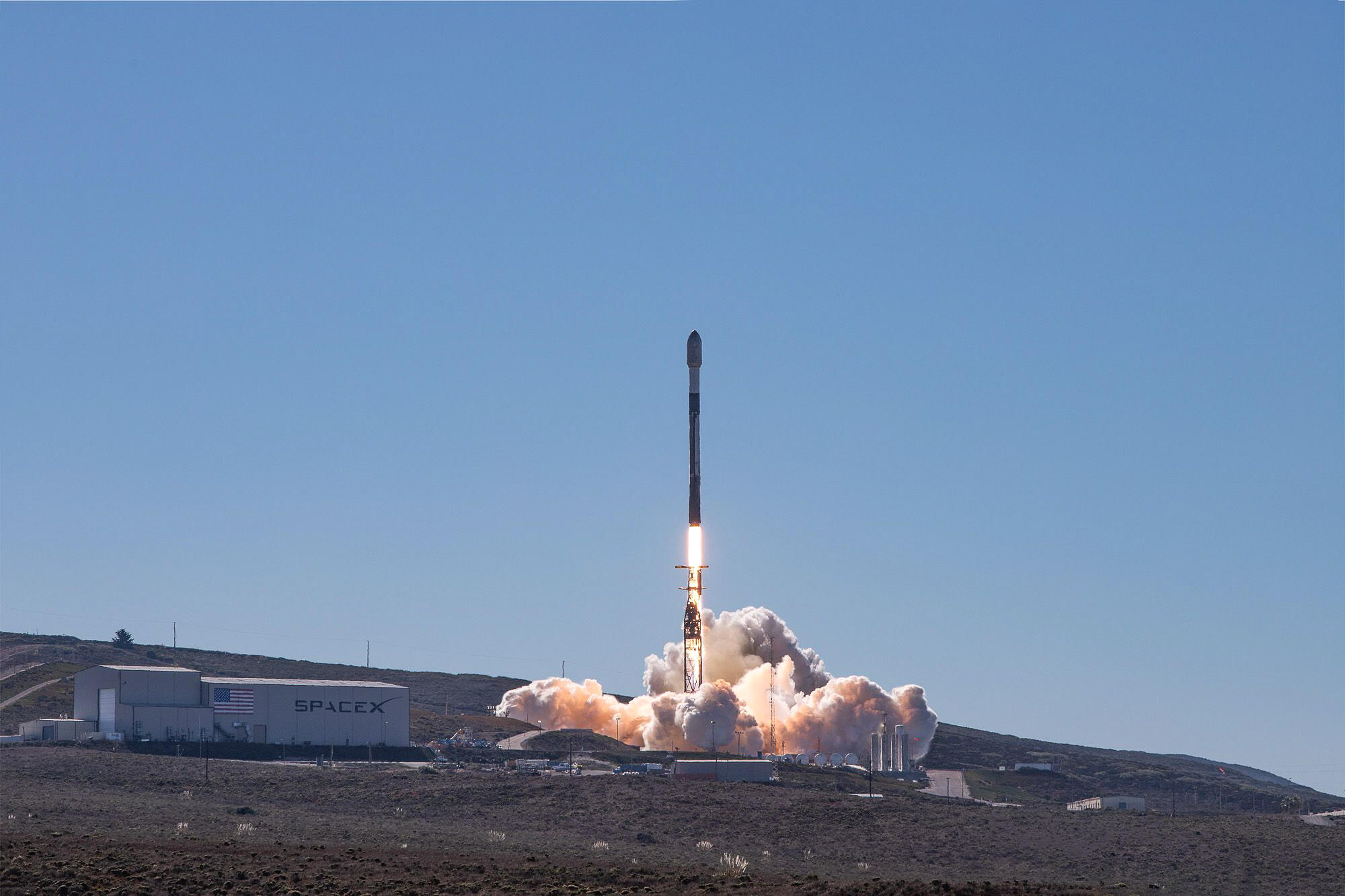
Launching HERON — short for High frequency Educational Radio communications On a Nanosatellite — into space was the culmination of years of teamwork that brought together the efforts of more than 100 students.
HERON Mk. II, the second iteration of UTAT’s spacecraft, was originally designed and built between 2016 and 2018 for the fourth edition of the Canadian Satellite Design Challenge. Since the Space Systems division was formed in 2014, many of the students who worked on the initial HERON design and build have since graduated. But the current operations team continued to develop the satellite and renew the student levy that allowed them to secure their space launch opportunity.
“The original objective for HERON was to conduct a biology experiment in space,” says Nero, who joined the team in 2019, during his second year of undergraduate studies.
“But because of delays in the licensing process, we were unable to continue that mission objective. So, we rescoped and shifted our focus to amateur radio communication and knowledge building.”
Once the satellite’s final assembly was completed in 2021, the team started flight model testing and its ground station assembly, while also managing the logistics of the regulatory approvals needed to complete the launch.
“It’s difficult to put something in space, both technically, and bureaucratically,” says Nero. “There are a lot of different governments that care about what you’re doing and want to know when and how you’re doing it.”
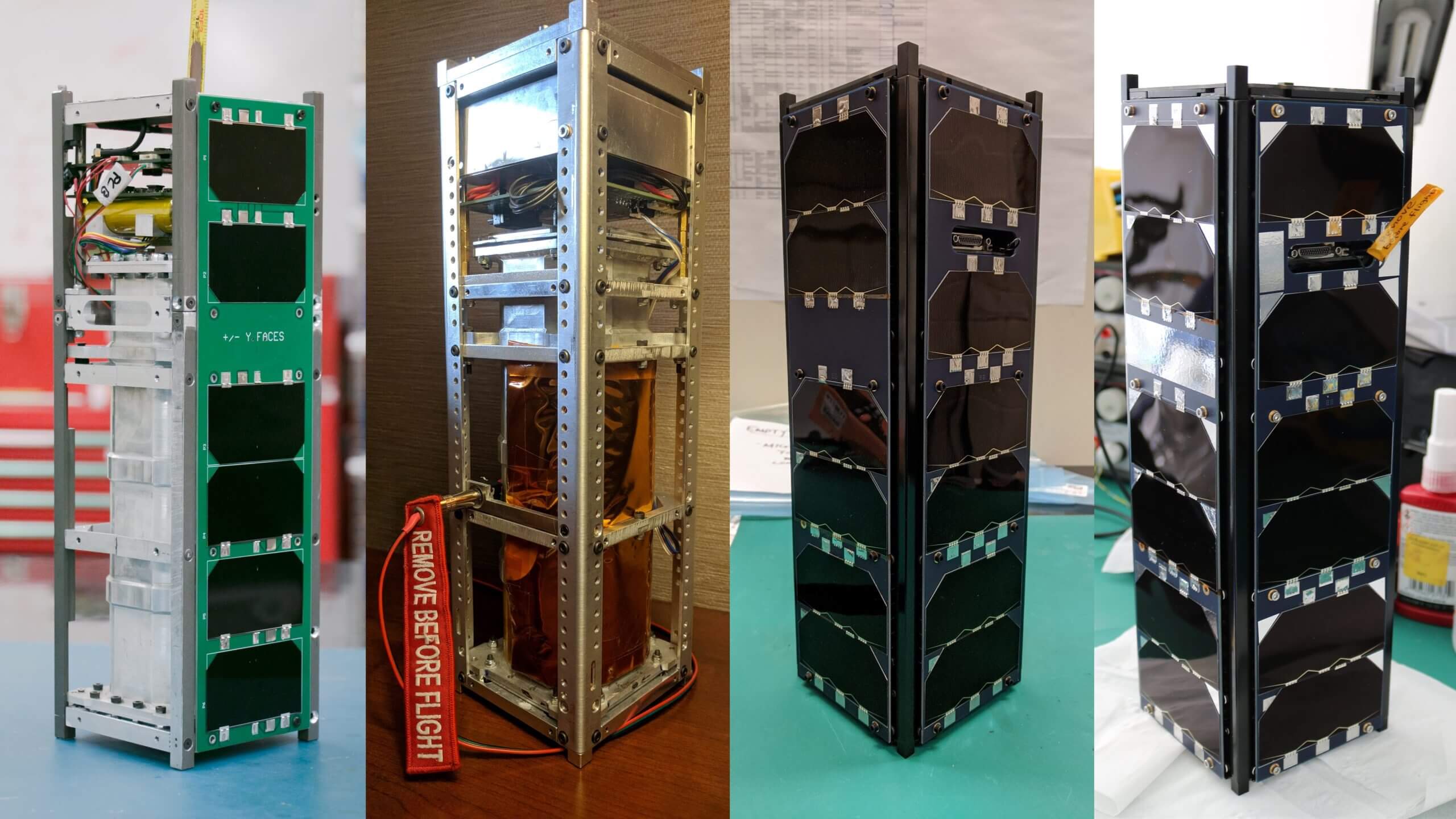
While getting to space was an important milestone, it was also the beginning of the next phase of the team’s self-training mission.
“The goal for us as a design team is to start gathering institutional knowledge that we didn’t have before,” says Reid Sox-Harris (ElecE Year 3), who is HERON’s ground station manager and the electrical lead for UTAT’s next space mission, FINCH (the Field Imaging Nanosatellite for Crop residue Hyperspectral mapping).
“We’ve never operated a satellite. So, we’re taking a lot of lessons learned with us through this process.”
For example, when a satellite is deployed for the first time, the ground control team only has a rough idea of its movement and eventual location. They must simulate the launch to figure out exactly where it is before they can establish a connection. And when they receive new positional data, they must rerun their simulation.
“We have to take into account effects such as air resistance, or the sun’s solar cycles, and the gravitational effects of the sun in the moon and the Earth — it’s a fairly complicated simulation,” says Sox-Harris.
“Part of the difficulty with simulation is that a model is only useful for a certain period. An old estimate could result in as much as a few kilometres of drift from the satellite’s actual position per day,” adds Nero.
The team was also tasked with designing a ground station that can not only survive a Canadian winter but is also capable of communicating with a satellite that is over 500 kilometres away.
“For any project, the most important thing you should be doing is testing,” says Swarnava Ghosh (ElecE Year 2), who primarily works on the ground station software.
“One challenge with our ground station currently is that there are too many variables that are not fully tested.
“Everything needs to be perfect in the chain for the communication to work. If the ground station is not pointing in the right direction, we won’t get a signal and we won’t establish communication. And if the amplifier is not working, then we won’t establish communication.”
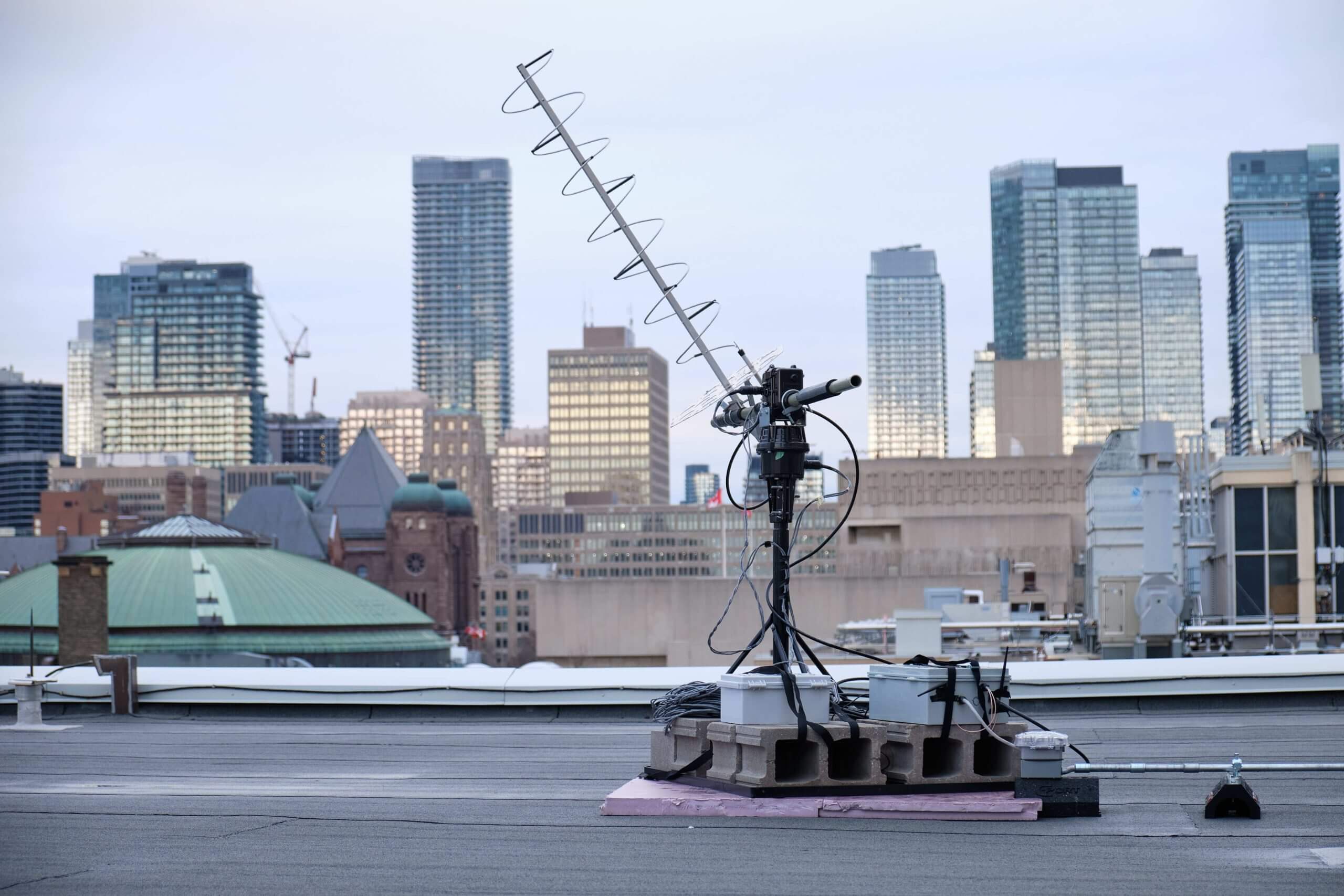
Despite current issues on the ground, the team is confident that they will be able to resolve the hardware and software bugs and establish communication with HERON.
One reason for these communication issues is that HERON and its ground station were not designed in lockstep, which the team is striving to do with its next mission, FINCH.
“With FINCH, we want to make sure the ground station software and satellite can communicate on the ground,” says Sox-Harris. “Right now, there are over 500 kilometres between the satellite and ground station, so we can’t fly up there and test whether a command has worked.”
FINCH is set to launch in late 2025 on a rideshare rocket flight. Its current mission objective is to generate hyperspectral imaging maps of crop residue on farm fields in Manitoba from a low-Earth orbit.
There are many technical developments that are new to FINCH that weren’t applicable to HERON, the team says, including a novel optic system for remote sensing that is being developed by students.
“The risks associated with FINCH are mitigated by the work that is being performed by HERON right now. We’re learning many lessons that will be directly applicable to our next mission, and we’ll continue to learn from HERON for at least another year or more,” says Sox-Harris.
“This means the FINCH mission can be more complicated, it can move faster, and ultimately, we can have better reliability, which is something that we always strive for in aerospace.”
“The teamwork and dedication shown by the UTAT members, especially over such a long project trajectory, is very impressive — as is the unique accomplishment of deploying a satellite into space,” says Professor Deepa Kundur, Chair of ECE. “I’m proud to see ECE students take on critical roles in this multidisciplinary effort. What a great learning experience! Congrats to the whole team.”
Story from U of T Engineering News, with files from Matthew Tierney
